
Werner Cahn (1920 – Present)
“It’s insane. I was lucky. I was just lucky.”
Werner Cahn was born on May 18th, 1920. The son of a cigar salesman, his family lived comfortably in the German city of Aachen. In 1938, Werner left his home to begin a four-year electrical apprenticeship at the Philips company headquarters in the Netherlands. He could have no way of knowing that that would be the last time he saw his parents. As the situation in Germany deteriorated, Werner was cut off from his family. They would attempt to leave after Kristallnacht (Nov. 9, 1938), but repeated deception by corrupt officials selling fraudulent visas and false promises would strand them in Germany. As the border closed and future darkened, Werner began a four-year journey through the thick of Nazi-occupied Europe to freedom.
Evacuating Eindhoven: May 10th, 1940
Werner was woken early that morning by the sound of airplanes flying over the city. Startled, he turned on his radio, where it was announced that the invasion had begun. The German army would take only five days to sweep through the Netherlands on their way to France. Knowing the danger they faced, Werner and a friend decided to make for the coast, hoping to catch a boat across the English Channel. With no car and choked roads, they mounted their bicycles. Werner remembers sleeping very little that first night, kept awake by the sounds of distant sirens and bombs. They were pushed alongside other Dutch refugees toward the Belgian border, just ahead of German advance.
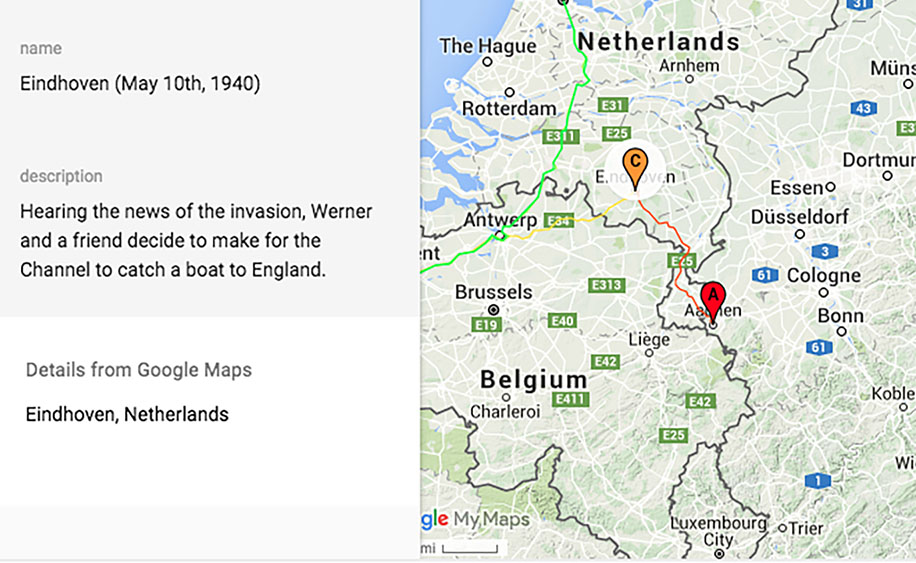
Beached in De Panne: May 17th – June 5th, 1940
Staying near Belgium, the news of surrender by the Netherlands meant the end of official evacuation efforts. Left on his own, Werner crossed the border into Belgium and pressed on toward France. He managed to reach De Panne but was not permitted to cross into Dunkirk as the guards feared interference with the evacuation. Werner had no choice but to wait for it to reopen. He remembers watching the evacuation of military personnel from Dunkirk from the window of his hotel room, and hoping there would be a boat for him. The next day German troops marched into the city, dashing any hopes of further evacuation.
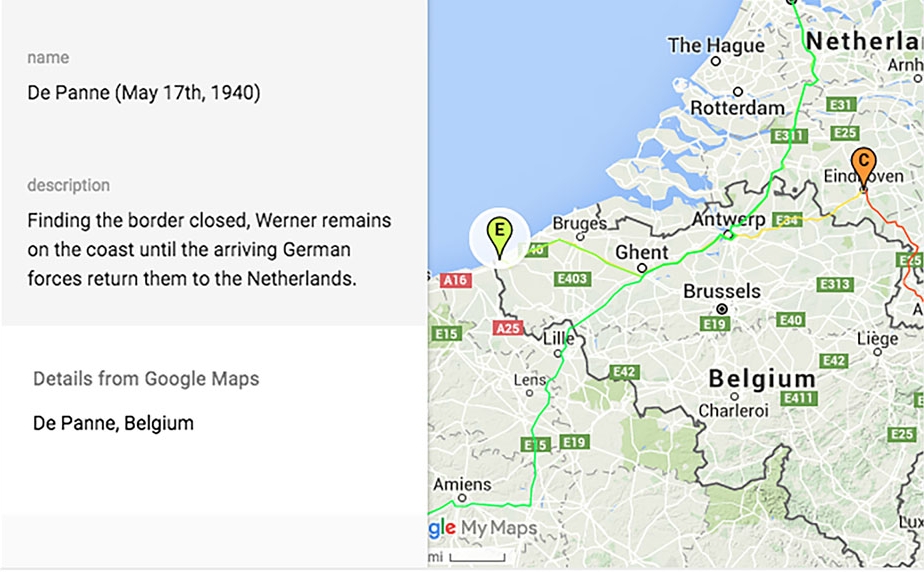
Holland Becomes Hell: June 1940 – Early 1943

Jews are rounded up in Amsterdam, 1940
With the border closed and much of Europe shrouded by the Swastika, Werner and the other refugees were returned to the Netherlands. Werner traveled to Amsterdam, where he took his savings and enrolled in an electronics school. Nazi occupation had wrought drastic changes on the Netherlands, especially for its Jewish population. First, Werner and other Jews in Amsterdam were forced to live in certain districts. He kept his head low, but remembers how “unpleasant situations” became harder and harder to avoid. When a bomb went off at the Gestapo headquarters in 1941, the city’s Jews were blamed, and the Dutch police helped round up around 300 Jews, including many of Werner’s friends whom he never heard from again. In May of 1942, Dutch Jews were required to wear the Star of David, and subjected to a harsh curfew in preparation for efforts to begin their deportation to Poland. Facing with these dire circumstances, Werner remembers how “three of us took our stars off and crossed the border to Belgium,” where they were connected with an organization that provided them new identities and a chance to escape South.
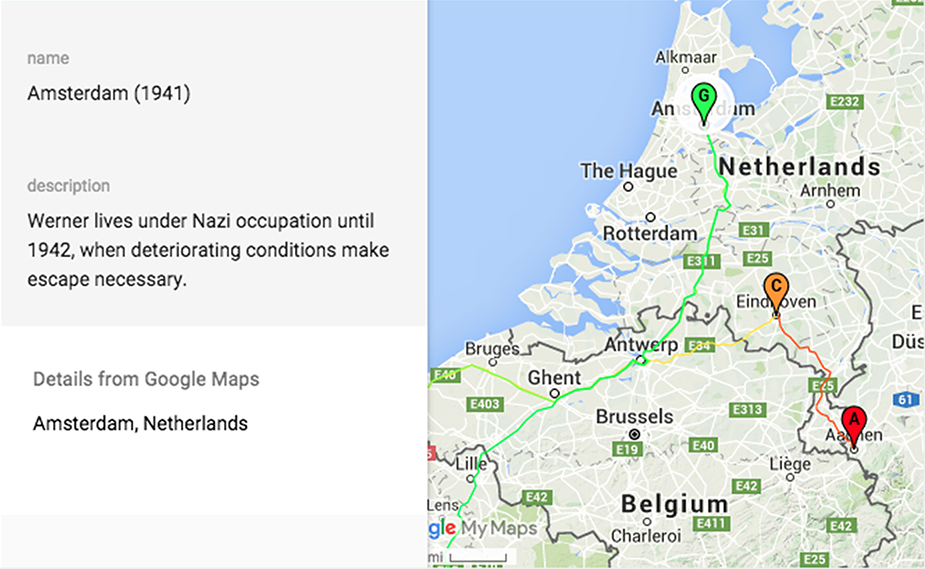
Winding South: 1943 – March, 1944
With little more than forged papers and instructions from resistance contacts, Werner saw many corners of France as he worked his way south towards the Spanish border. Posing as a Dutch laborer, Werner often found himself requisitioned by the very occupying administration he was trying to escape. In Normandy, he was assigned to a crew fortifying the coast in defense against possible Allied invasions. Werner was even sent to Paris to hide “right under their noses.” Thanks to his Dutch identity and German appearance, he had relatively few close calls. He eventually was assigned to chop lumber near Bordeaux, then Toulouse, a placement which allowed him to slip closer to freedom in Neutral Spain. “I didn’t make the decisions in those days,” he remembers, “they happened at a higher level.” His contacts and papers would succeed in getting him to the border, but a harrowing crossing still stood between him and freedom.
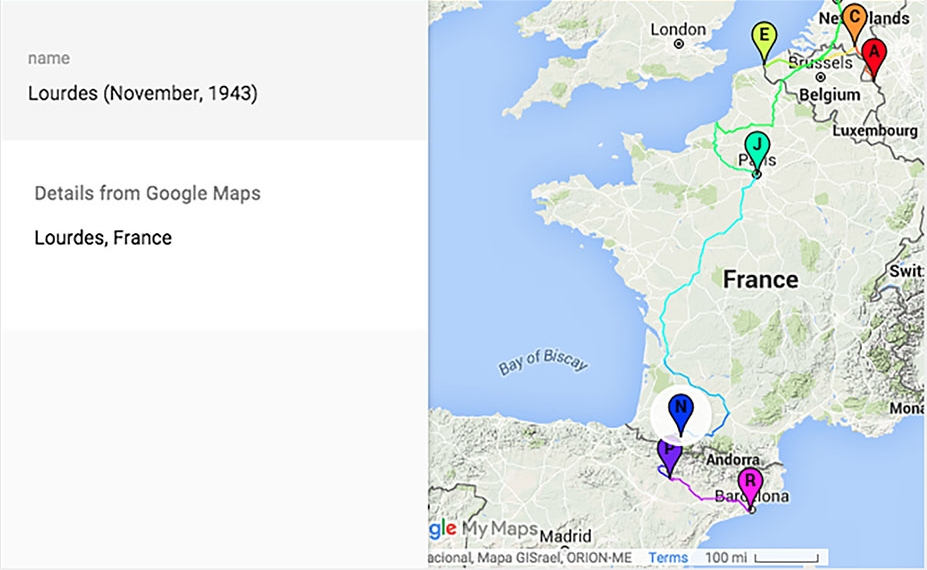
Crossing the Pyrenees: March, 1944
After a winter of plans stalled by heavy snow, the time was finally right. Werner’s contacts directed him to a small town in the foothills of the Pyrenees. A group of thirty refugees accumulated and prepared over five days before the crossing was attempted. Crossing took six days, sometimes in exhausting snow and extreme chill. Werner remembers how “every 5 minutes, the train of people would stop so those at the front could go to the end because the snow was so exhausting to go through.” On the sixth day, they awoke to blue skies, under which they followed a river bed and descended into Spain.
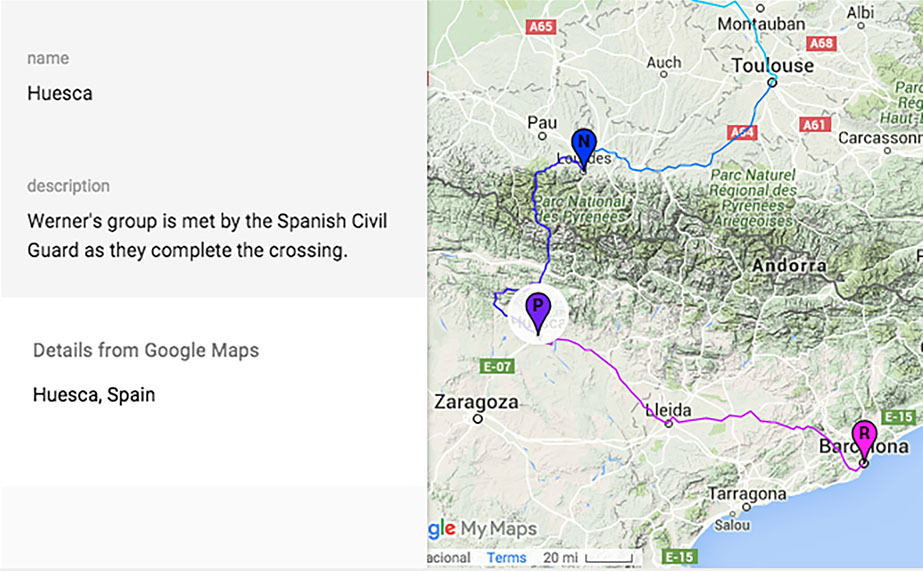
Four Years of Freedom: 1944-48
Upon their descent into Spain, the Spanish Civil Guard took them into custody. Far from afraid, Werner was delighted to see them. “That’s what we wanted, anyhow, we were very happy to be put into prison for the night. We are in Spain, we are free!” The Guardia Civil sent them through Lleida, where they boarded a train for Barcelona. There, a Jewish agency set him up with a family in Barcelona while their exit was secured. Werner and around 500 Jews, most of whom had also crossed from France, were taken by ship through the Ally-controlled Mediterranean to the northern port city of Haifa, Palestine. Werner would stay in Israel for 4 years, spending some of that time on a kibbutz. Just before Israel’s 1948 War of Independence, Werner boarded a ship for San Diego, where he has lived ever since.

![]() Explore Werner Cahn’s complete journey with the interactive Google map. Get started by clicking the Layers panel (pictured left) to see the stages of Werner’s journey:
Explore Werner Cahn’s complete journey with the interactive Google map. Get started by clicking the Layers panel (pictured left) to see the stages of Werner’s journey:







Leave A Comment